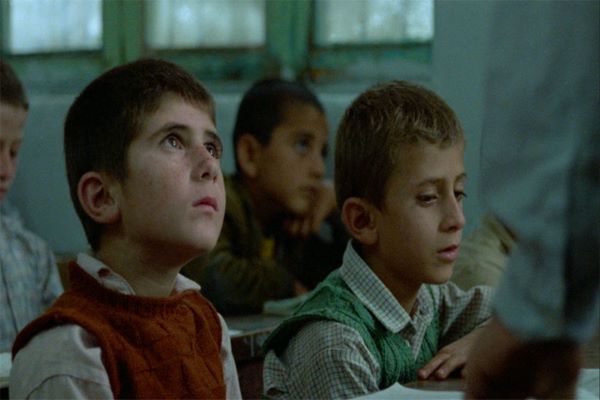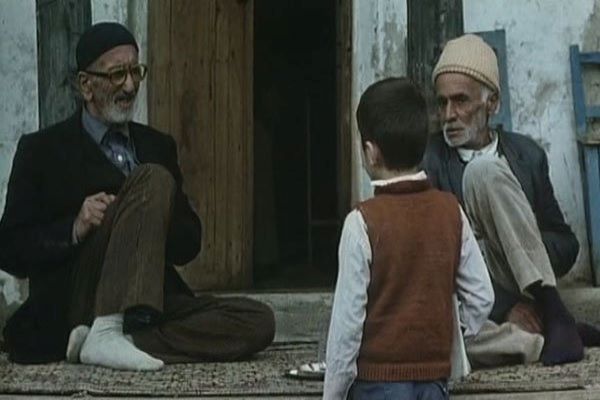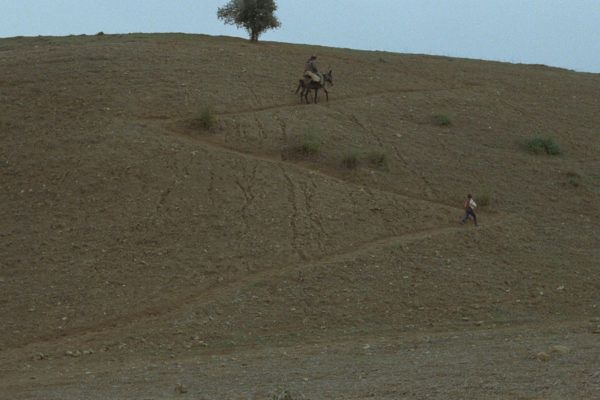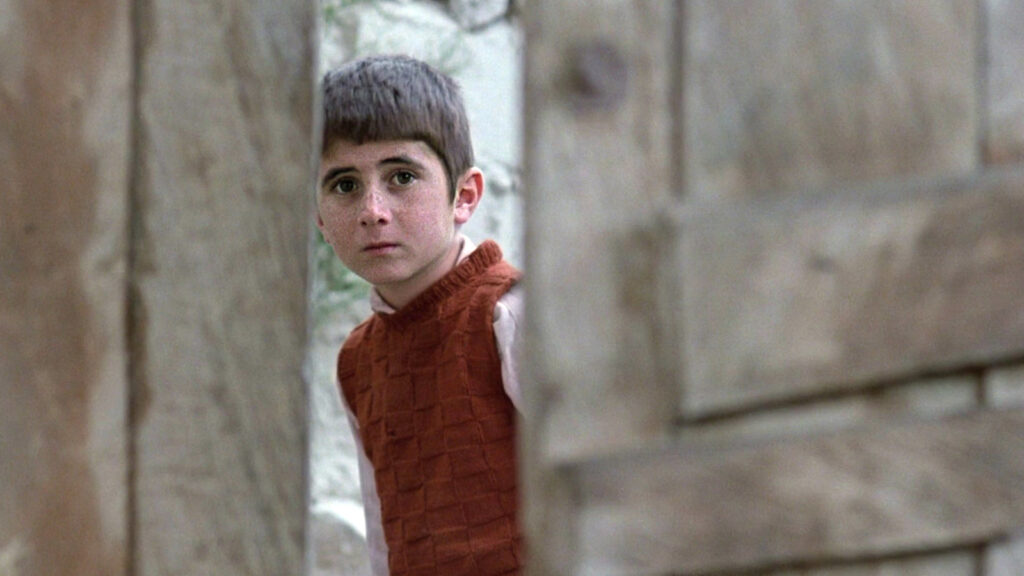Abbas Kiarostami’s Where Is the Friend’s Home? is a heart-touching story of a schoolboy who goes to his neighboring village to return his friend’s notebook so that he does not get expelled by the schoolteacher the next day. The film shows how efficiently a filmmaker can make a film based on children and highlight their minds, thoughts, and overall lives. It becomes a universal film. The film focuses on civic duty, responsibility, friendship, the relationship between children and elders, and the lives and culture of rural Iranian people. Where Is the Friend’s Home? is the first film of Kiarostami’s Koker trilogy.
The film starts in a classroom. A teacher is checking the homework done by students. The teacher scolds a student named Mohammed Reza Nematzadeh (Ahmad Ahmadpour) for not using a notebook even after asked repeatedly. He warns Nematzadeh of expulsion if he repeats this one more time. Another student Ahmad (Babak Ahmadpour) mistakenly takes his friend Nematzadeh’s notebook to his house. He must return the notebook to Nematzadeh so that he can finish his homework and come to school the next day. Ahmad repeatedly tells his mother that he must return the notebook to Nematzadeh. However, his mother does not show any concern and refers to his quest as an excuse to avoid study. Ahmad remains determined to return the notebook to Nematzadeh. Instead of going to the shop for buying bread, he sets out to Poshteh where Mohammed Reza Nematzadeh lives to return the notebook.

Ahmad’s journey from Koker to Poshteh is through the zigzag rural Iranian landscape. He crosses the hill and reaches Poshteh. He asks multiple people including one of his classmates about Nematzadeh’s house. However, he is not able to find that out. In Poshteh, he comes to know that Nematzadeh has just left for Koker with his father. Enthusiastically, Ahmad returns to Koker. In Koker, Ahmad has a brief interaction with his grandfather. His grandfather possesses an old mindset of ruling over the children. He asks Ahmad to buy a cigarette for him, which Ahmad refuses. A little later, Ahmad hears the conversation between a customer and a construction contractor who identifies himself as Nematzadeh.
When the contractor leaves Koker for Poshteh, Ahmad follows him running behind. However, in Poshteh, he discovers that this Nematzadeh is not his friend. There are many Nematzadehs in Poshteh. An old man helps him to find out his friend but he remains unsuccessful in finding him. Ahmad returns to his home in Koker later that night. Ahmad completes Nematzadeh’s homework as well. The next day, when the teacher is about to check Nematzadeh’s homework, Ahmad returns Nematzadeh’s notebook. The film ends with a flower in the notebook, though the teacher overlooks it.

Where Is the Friend’s Home? is an extraordinary creation of Kiarostami. Like many Iranian films during the 1980s, this film too features children. Kiarostami is a master of children-centric films. He received international acclaim and recognition first time through this film. Children are the mirror of society. They react to the good and evil of society. The film teaches us how much determination is required to perform civil duties efficiently. Ahmad is always much concerned about returning the notebook to Nematzadeh. His tender heart feels the pain of Nematzadeh’s probable expulsion from the school. He cannot remain inactive and must shoulder the responsibility.
Crossing the hill and reaching the neighboring village is not an easy job for a little schoolboy like Ahmad. In addition to that, he is alone, there are multiple dogs on the road, and the day has turned into night. In spite of all the obstacles, Ahmad stands firm in his determination to return the notebook to his friend Nematzadeh. This incident should set up a burning example of civic duty, responsibility, and friendship. The film also showcases the culture and lives of rural Iranian people.

One of the most important aspects of Where Is the Friend’s Home? is zigzag rural Iranian roads. This landscape has always been a very strong feature of Kiarostami’s films. Ahmad’s running through the zigzag road in Koker is one of the most renowned scenes in world cinema. Ahmad is a very young schoolboy, but he does not step back to perform his civic duty. However, it is painful and surprising to see that he receives neither encouragement nor any sort of help from the elders including his mother. They merely show him direction but do not actively help to find out Nematzadeh’s house.
Kiarostami shows a true but painful picture of society in performing civic duty and shouldering responsibility through this film. Ahmad’s grandfather even vouches for beating children to have control over them. While the elders fail miserably, the kids show us the most civilized way of performing human duty. Farhad Saba’s camera captures mesmerizing views of rural Iranian roads, natural beauties, and the lives of ordinary people. Where Is the Friend’s Home? has received widespread critical acclaim globally since its release.
